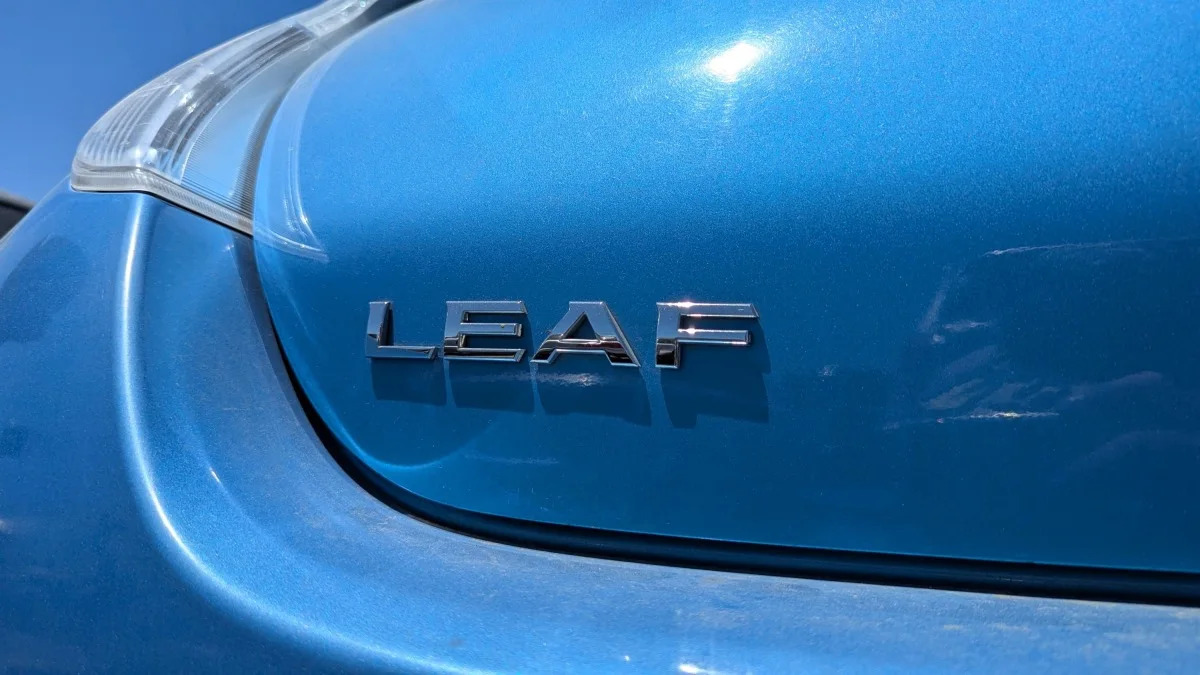Junkyard Gem: 2014 Nissan Leaf

After writing about nearly 3,000 discarded vehicles during the past 17 years, I’ve learned that it takes just over a decade for a new type of car to begin showing up in the big self-service boneyards (not counting unrecognizably crashed and/or burned ones). The first mass-produced battery-electric vehicles of the modern era hit American streets during the early 2010s, which means used-up examples can now be found in Ewe Pullet-type car graveyards. Here’s one currently residing in Carson City, Nevada.
While battery-powered vehicles enjoyed mainstream sales success during the early days of the automobile, there were very few sold from the 1920s through the end of the 20th century. Things in the EV world got more interesting during the late 1990s, when General Motors sold the EV1 and Toyota offered the RAV4 EV (I feel fairly certain that I’ll never run across a junked EV1, but I have found a discarded ’02 RAV4 EV).

Then the electron-fueled pace really picked up in the late 2000s. The Tesla Roadster became available to the public in 2008, followed by the Nissan Leaf in late 2010 and the Mitsubishi i-MiEV a year later. The Leaf immediately became the best-selling EV in the world, a title it held for most of the 2010s.

Nissan would like us all to spell this car’s model name in all capital letters, because LEAF is one of those tortured acronyms so beloved by Japanese carmakers: Leading, Environmentally Friendly, Affordable Family Car. This isn’t as annoying as the model names we’re supposed to spell in all-lower-case letters or the ones with punctuation marks, but I’m not going to play that game. This is a Leaf, which means the plural shall be Leaves.

Because EV drivers get to drive solo in California’s HOV lanes, the early LEAF sold very well in the Golden State. This car’s current (and final) residence is across the state line in Nevada, but Carson City is only about ten miles from California.

You can tell it began its career in California from the Proposition 65 sticker on the driver’s side window, which informs car buyers that there may be cancer-causing materials inside. Most owners scrape off these stickers, but this one remained for the life of the car.

This car wasn’t crashed and the interior looks like it was in good shape upon junkyard arrival, so why did it get thrown out? Resale value on the 2014 Leaf and its 84-mile range isn’t so great compared to newer models, so we can assume that some costly mechanical problem ended this car’s career. Nissan wants $14,941.18 for a replacement battery pack, so that’s a good candidate for this Leaf’s demise.

The current Leaf can go up to 212 miles on a charge and boasts 147 horsepower (40 more than its 2014 predecessor) plus far superior fast-charging ability, so the specs on this car seem antiquated just a decade after it was built.
Good for the world, built in America.
What if everything ran on gas?





